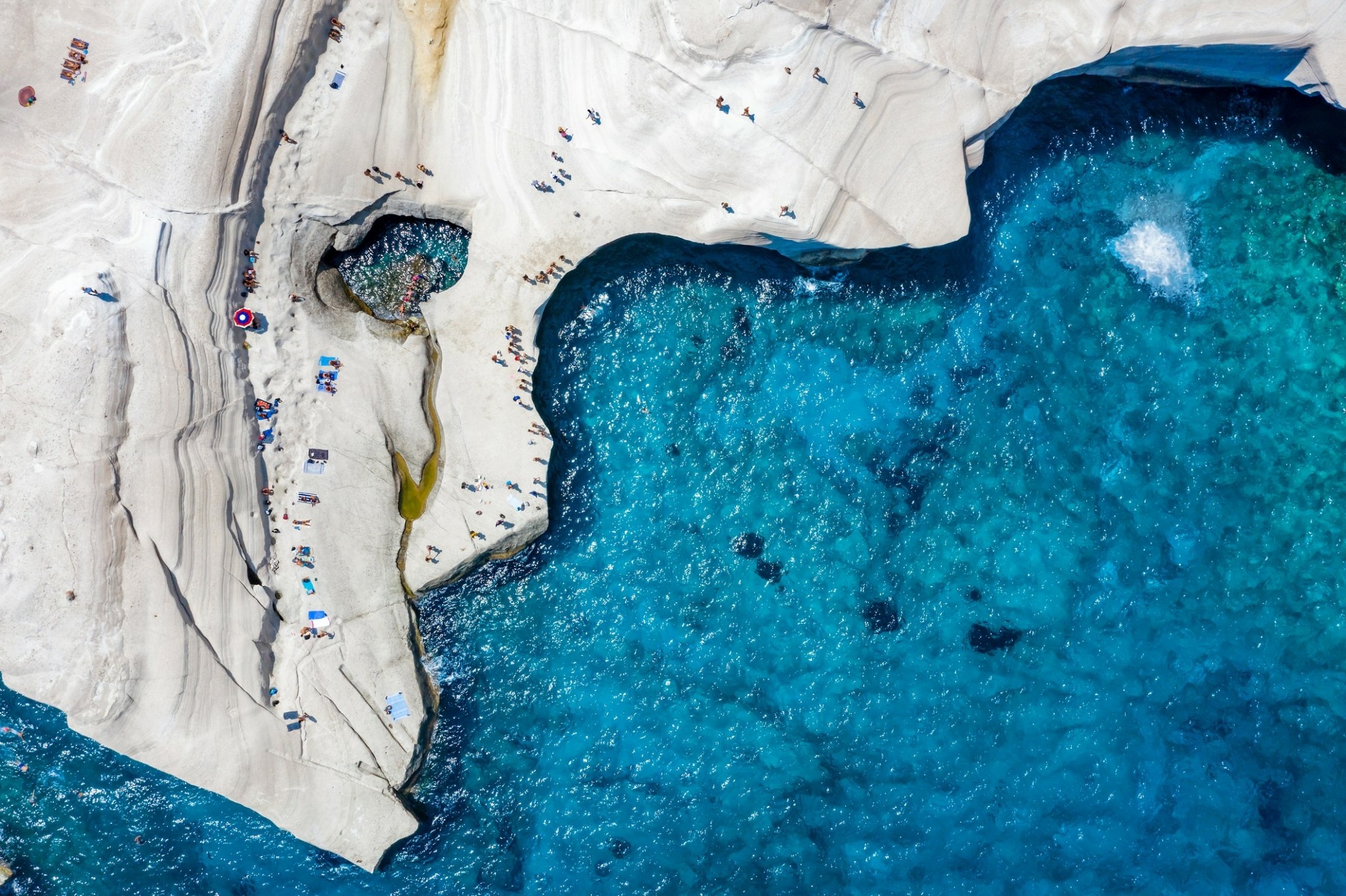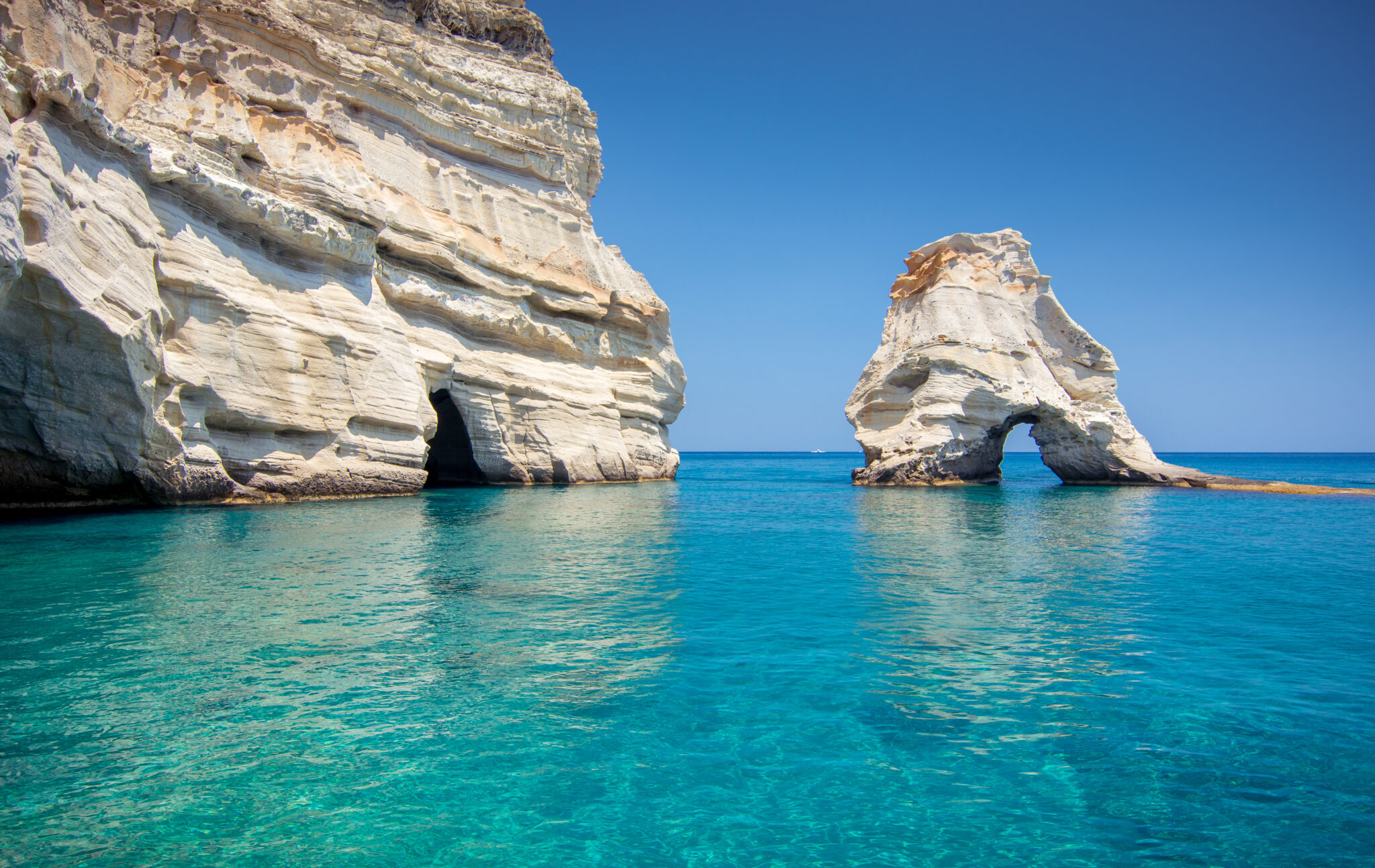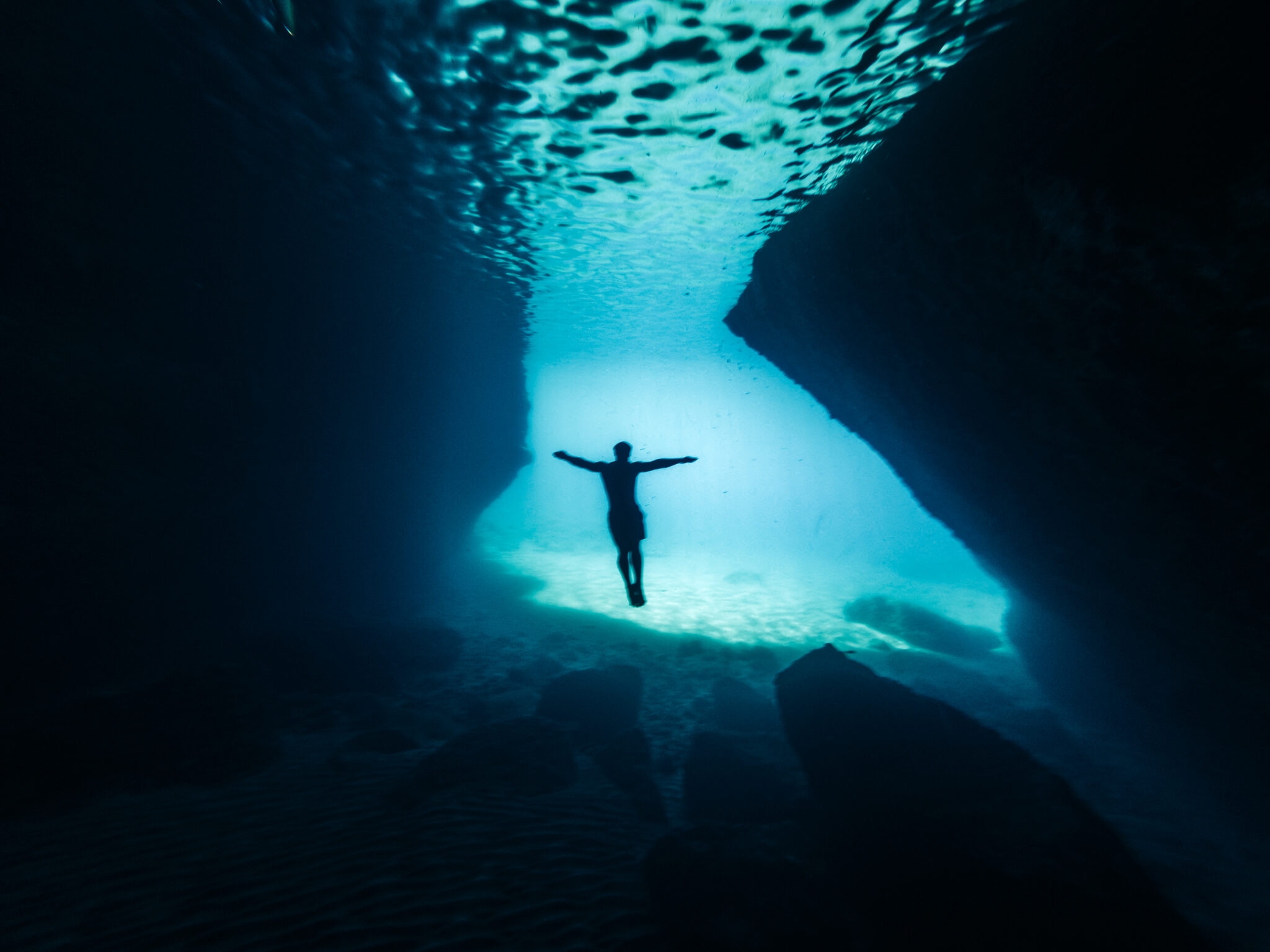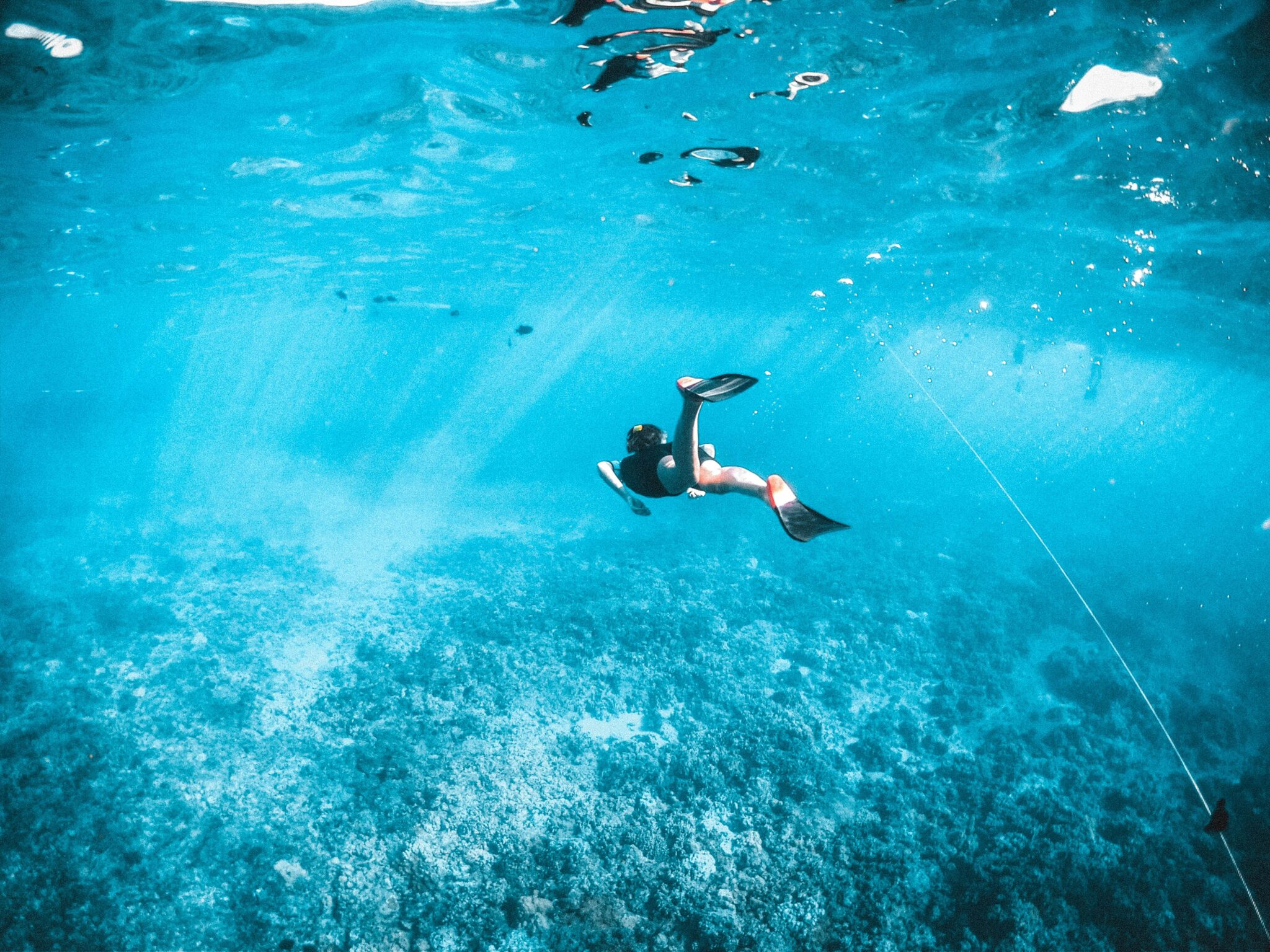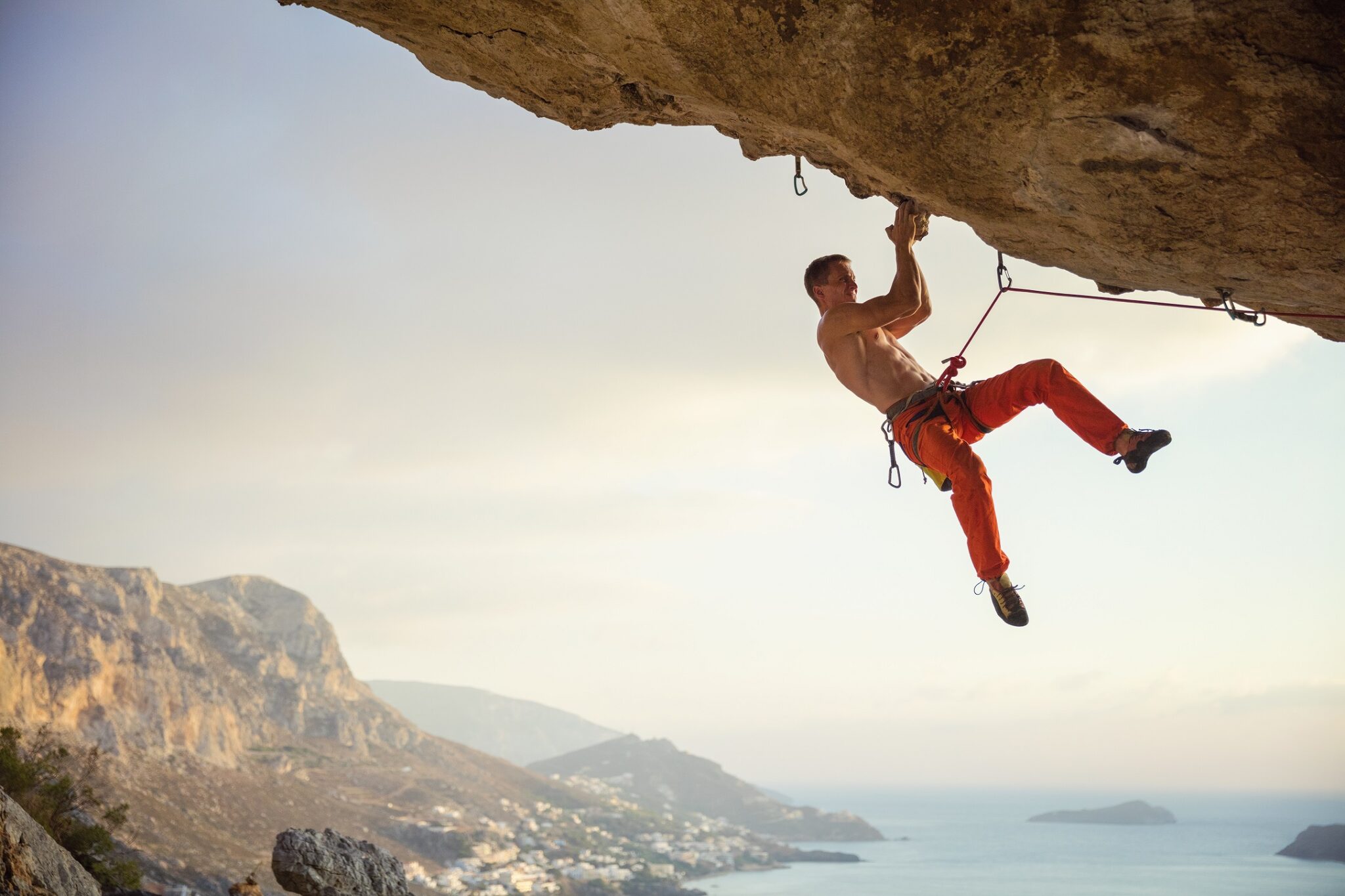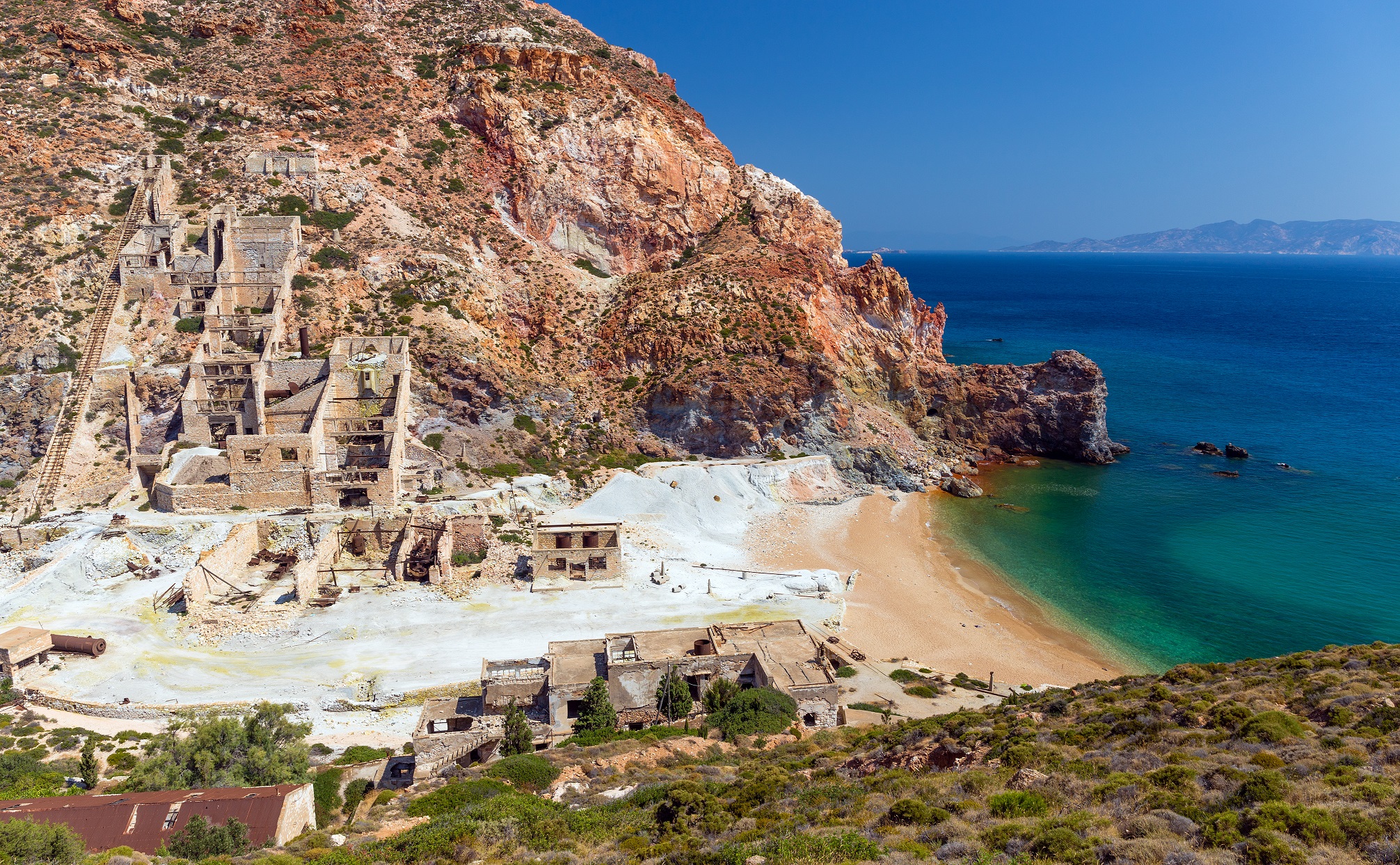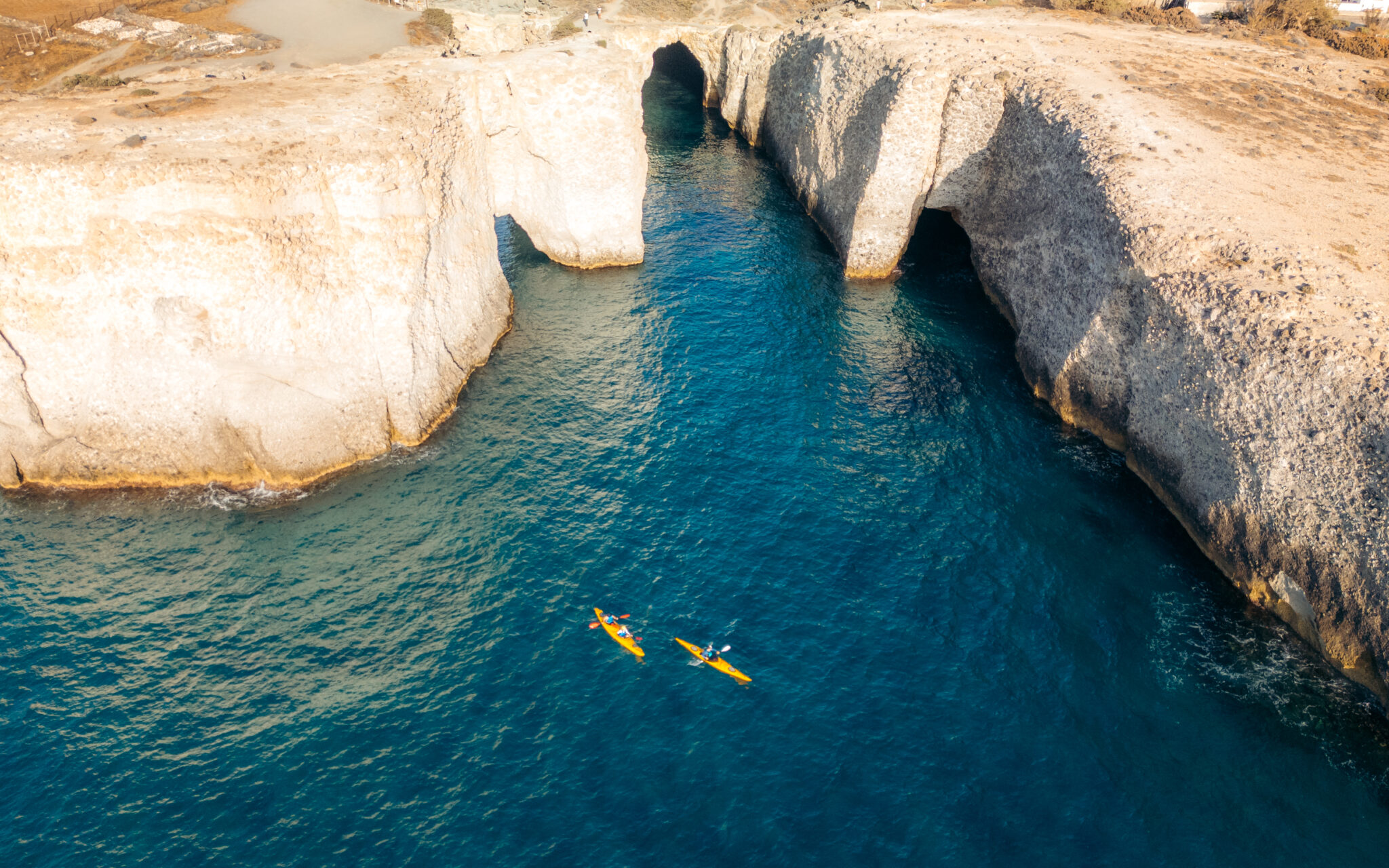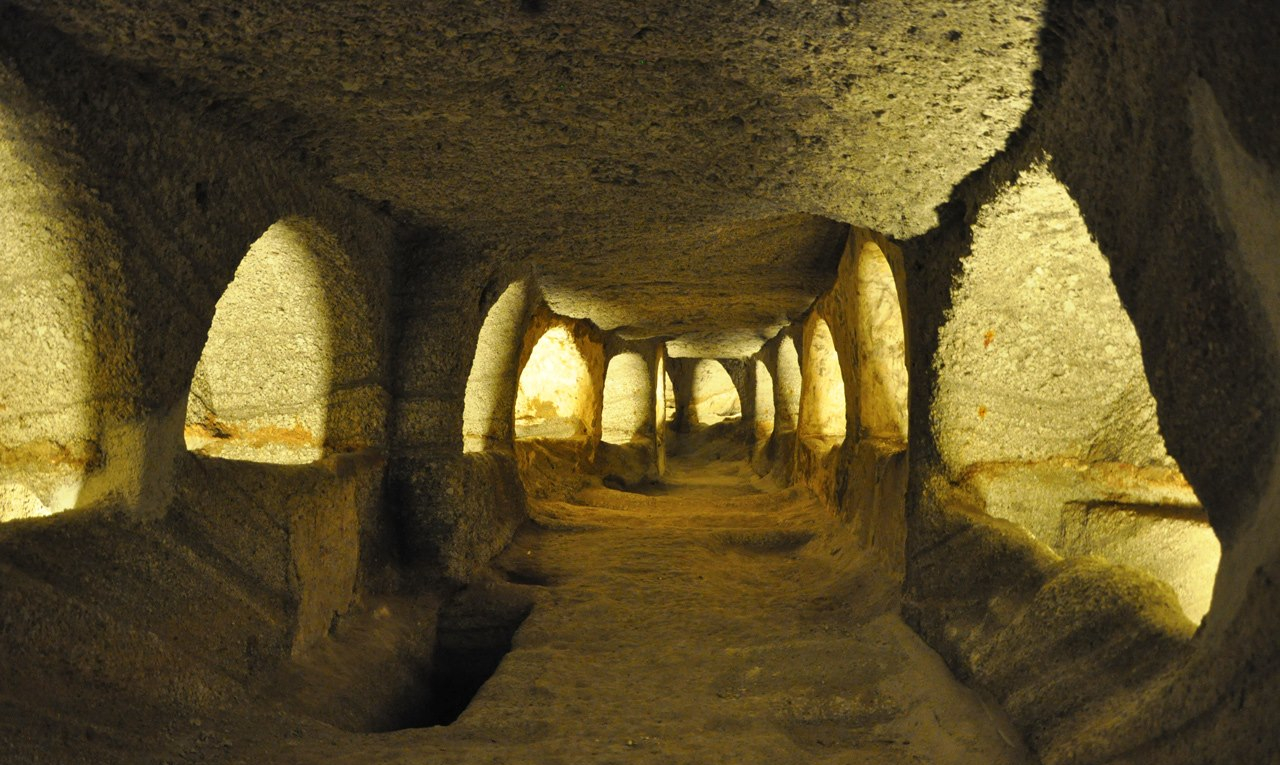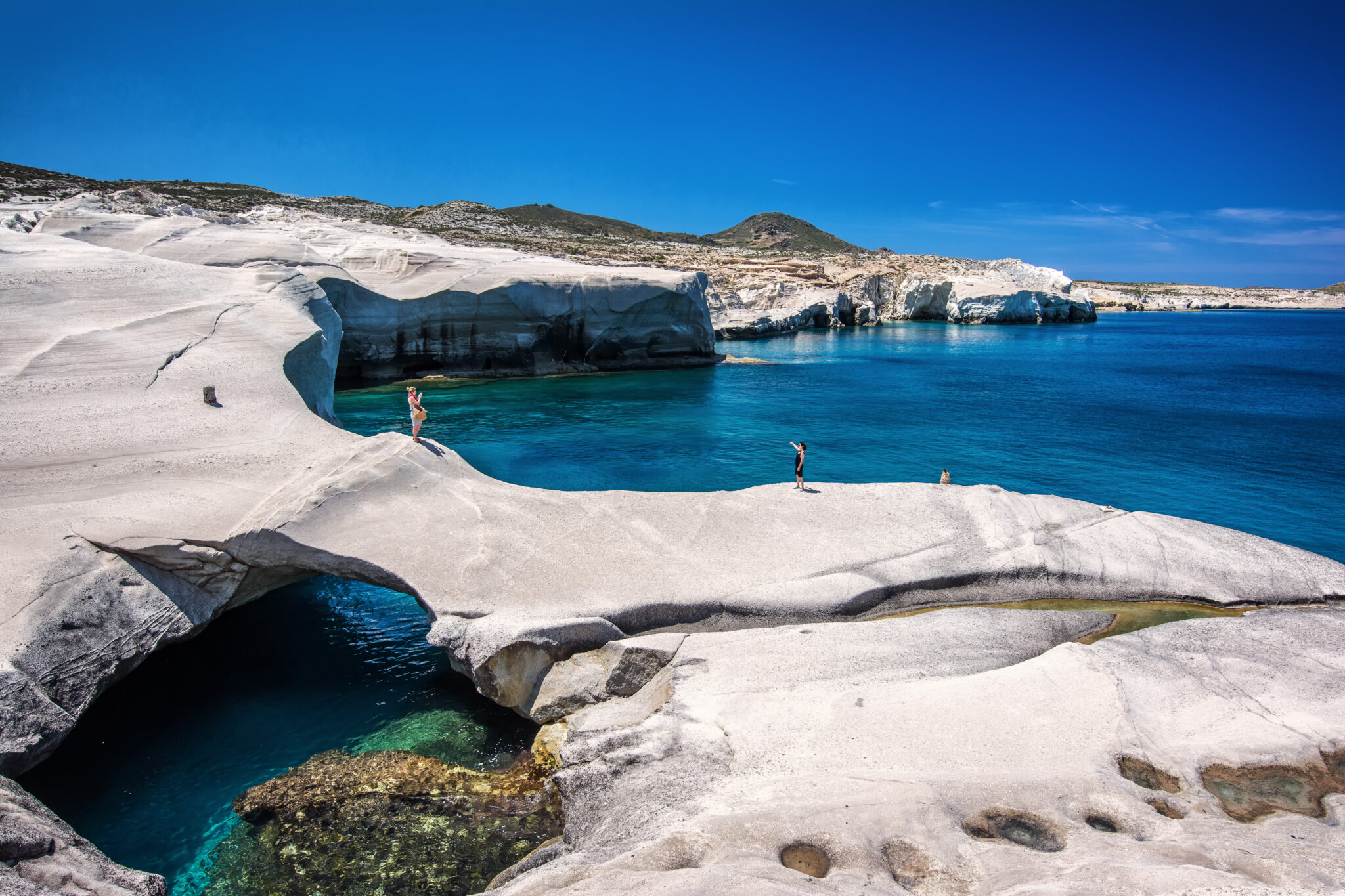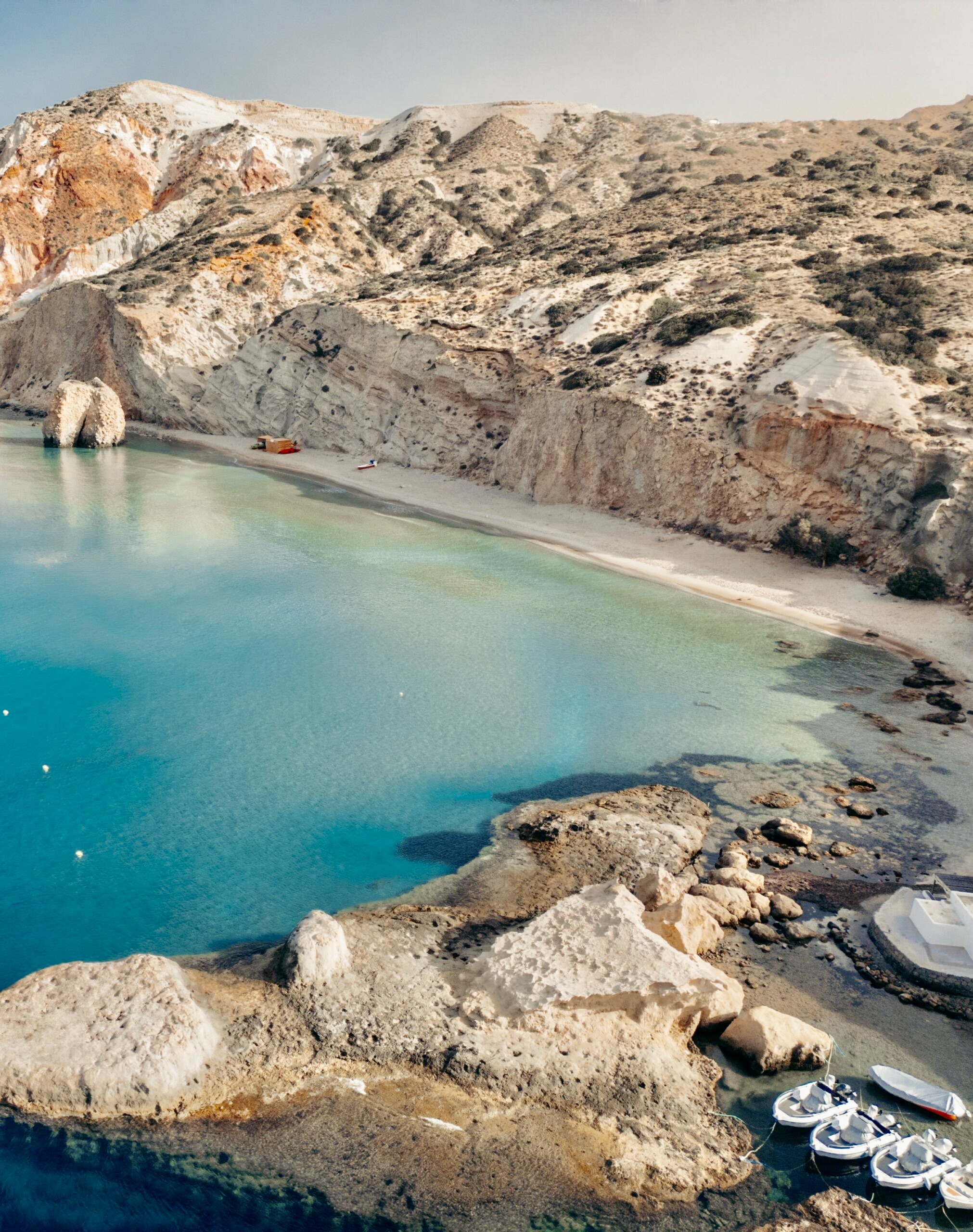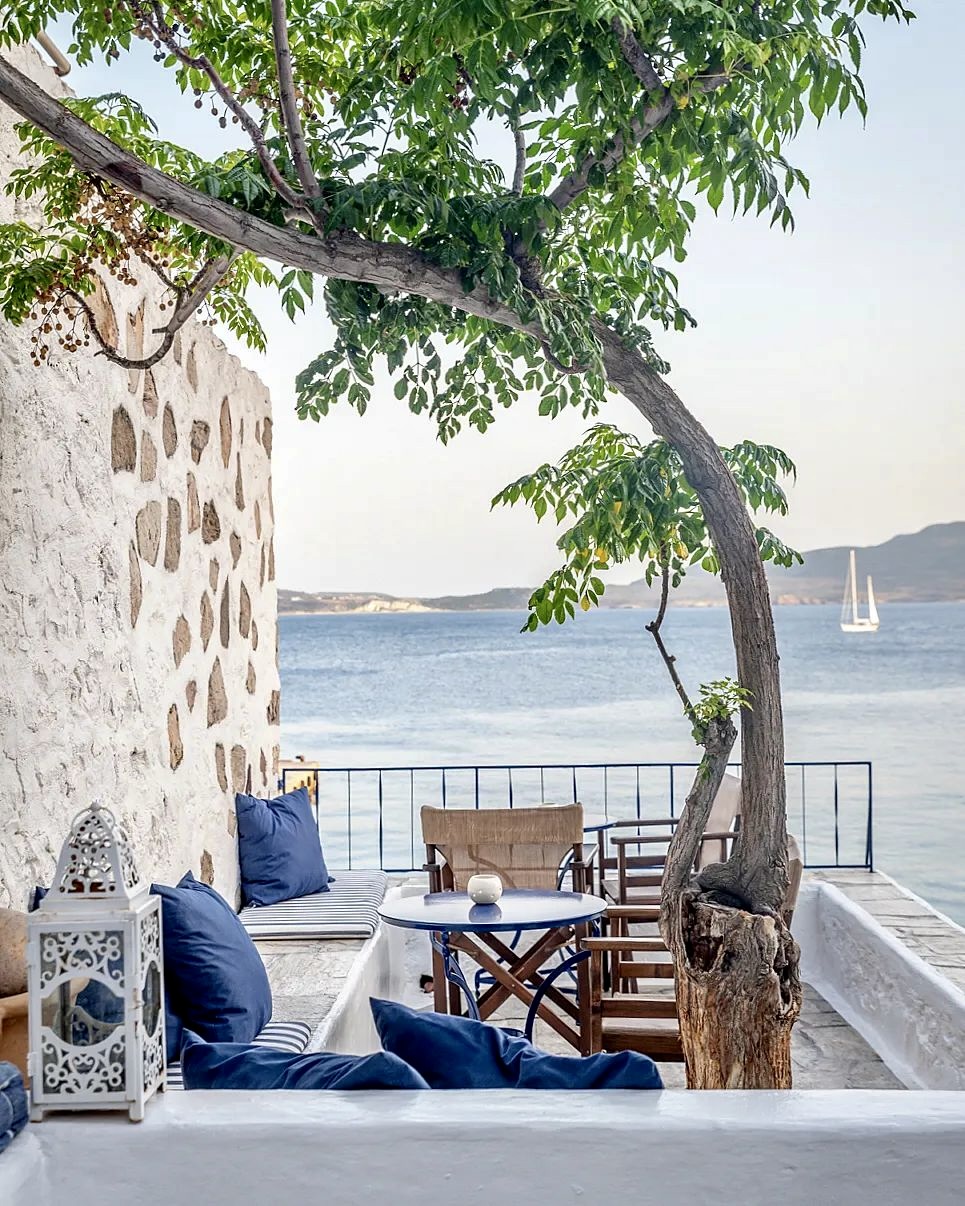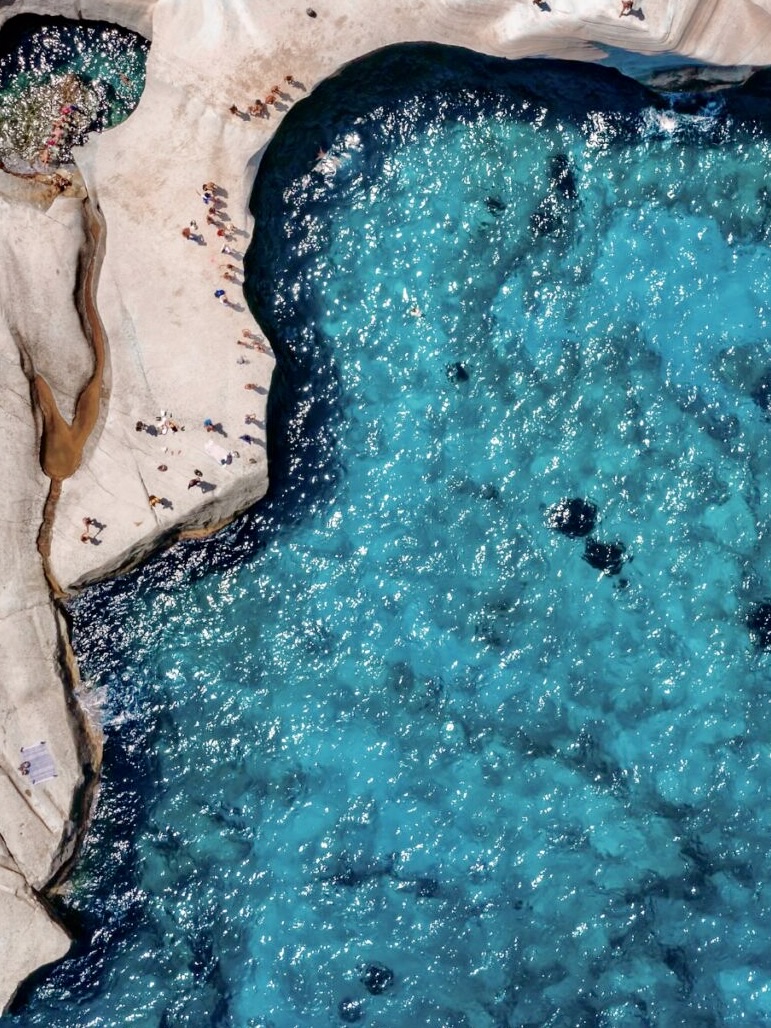Enjoy the stunning spectacle of volcanic landscapes as well as sea excursions, diving, climbing, and trekking. From dizzyingly unique beaches and landscapes to volcanos, sulphur mines, piratic caves and the ‘towers’ of Aphrodite and Poseidon, Milos is a wondrous place.
Beach Life
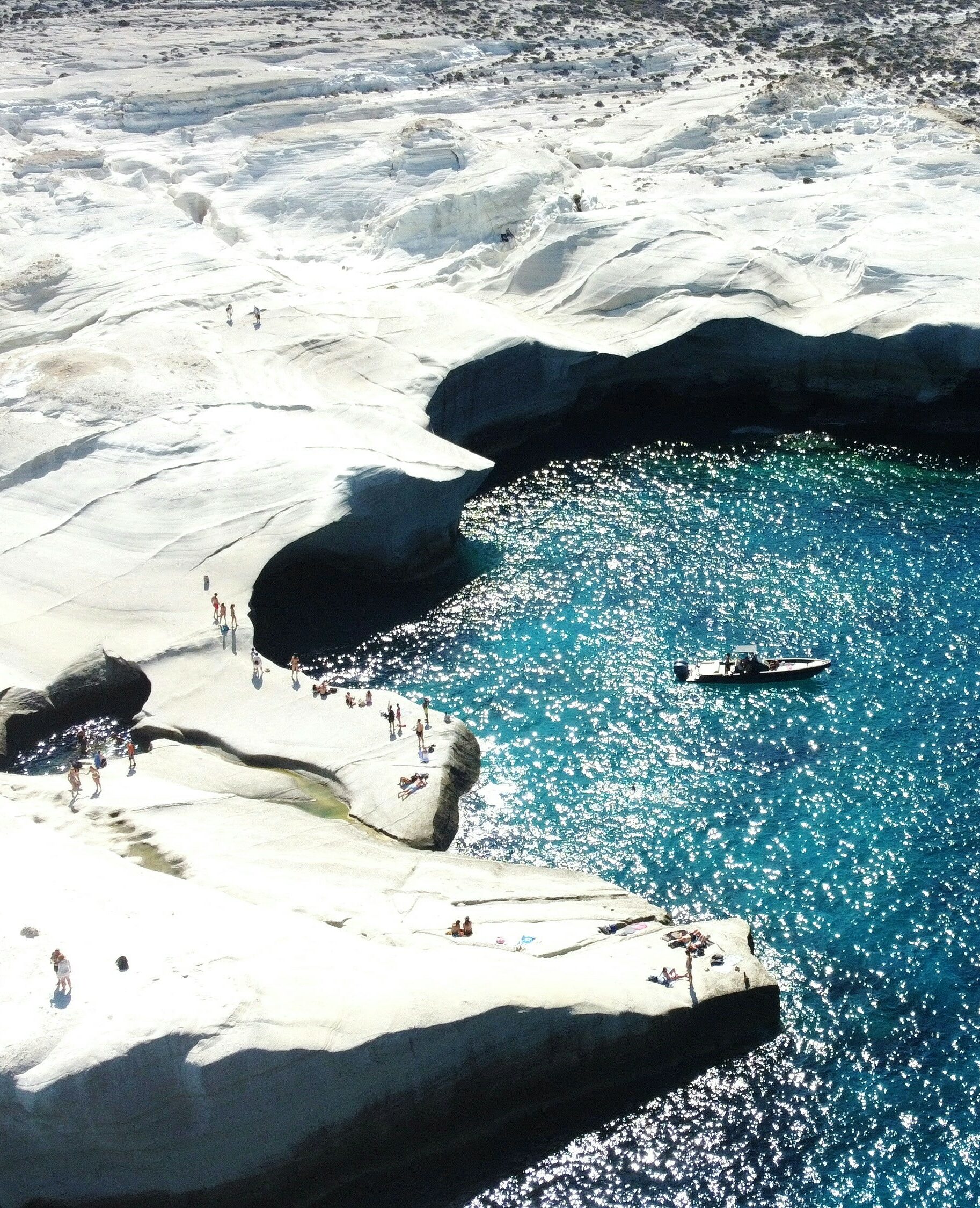
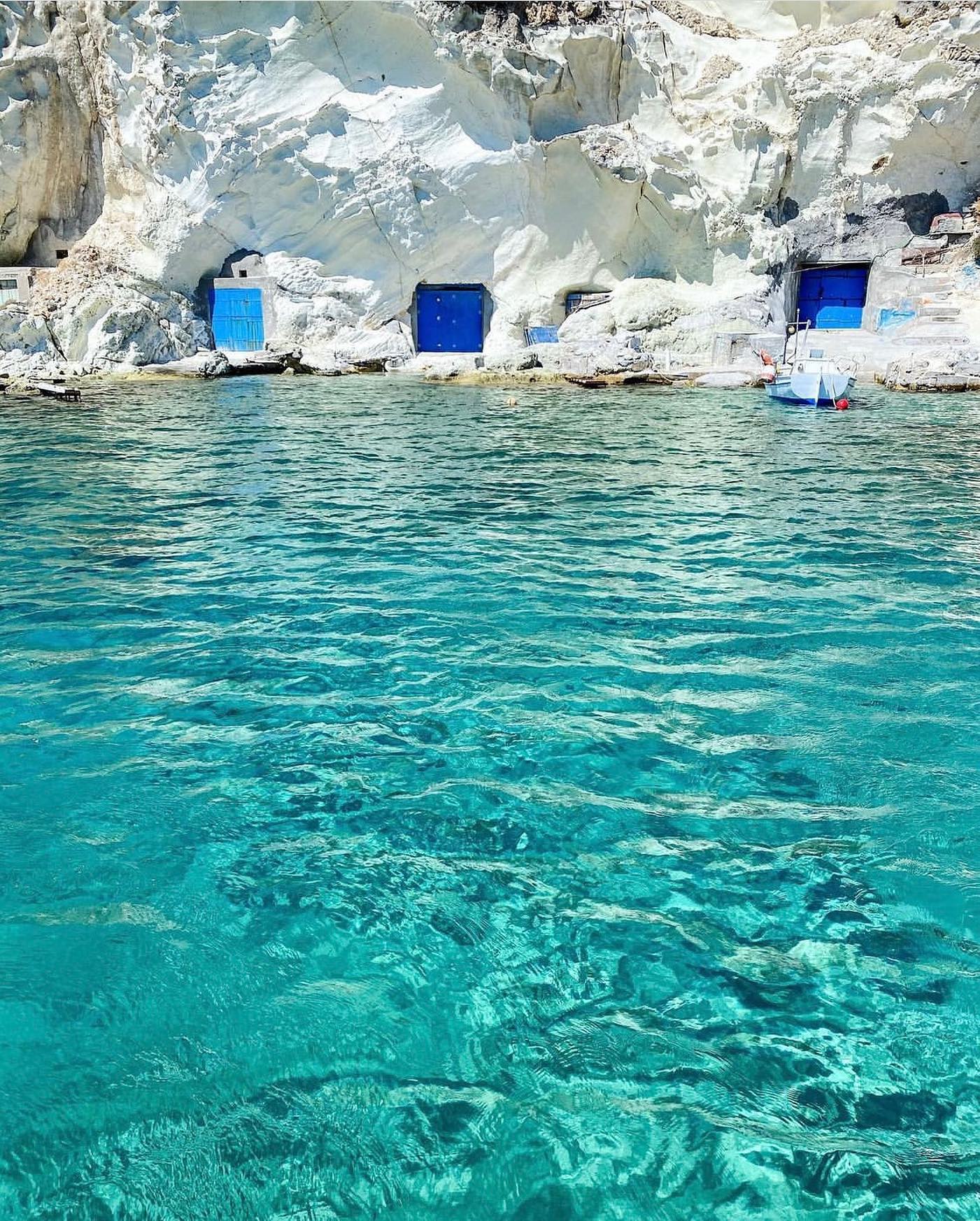
The best way to admire and experience the island’s volcanic beaches and the famous Kleftiko seascape is by boat. There are many options – wooden boats, catamarans, speedboats, sailing boats – and various organized tour programs are available. You can also create your personal itinerary and rent a boat with your friends.
One of the most popular sea excursions is to Kleftiko, a geological park featuring sculpted rocks and caves. During the voyage, stops are made at beaches on the western side, including at Triades, with sandy coves and volcanic rocks in breathtaking shades.
At Kleftiko, depending on the program you’ve chosen, the stop usually lasts 1-2 hours.
Another popular excursion is along the western and northern coastline. You will see Klima with its colorful “syrmata”—traditional cave houses with vividly painted facades, built to store the locals’ wooden boats during the winter. The excursion boat then passes by Plathiena, Fyropotamos, and Mandrakia—also featuring “syrmata”—the famous Sarakiniko, Alogomandra, and Pachaina. Along the way, you’ll marvel at the Glaronisia, three impressive rocks inhabited only by seagulls. These rocks consist mainly of andesite, formed into upright columns with hexagonal or pentagonal prism shapes.
Most sea excursions depart from Adamas. From Pollonia, excursion boats set off to the neighboring island of Kimolos, passing by Polyaigos, a small island with crystal-clear turquoise waters. During the high tourist season (July and August), it’s best to book tickets at least a few days ahead online or at the port’s tourist offices, as demand is very high.
Diving
Milos is ideal for diving and snorkeling. Several companies rent equipment and offer boats to take you to diving spots, as well as kayaks. These companies are based in Adamas, Pollonia, and Fyriplaka. The best places to dive are the underwater areas near the rocks called Arkoudes, at Rivari, Cape Vani with its old manganese mines, Papafragas, Korakonisi, the Emerald Cave, Kleftiko, and Kalogries. You will find underwater caves, shipwrecks, and many species of fish, including rare ones, as well as volcanic hot springs. If you’re lucky, you may spot a Caretta Caretta sea turtle. Polyaigos and Kimolos also have excellent diving conditions.
Climbing
Climbing areas have been organized at Glaronisia, as well as at Prophet Elias, where the Municipality of Milos has installed climbing anchors and belay stations. Climbing the rocks of Cape Vani is particularly fascinating – on the so-called ‘towers’ of Aphrodite and Poseidon. The landscape, once home to manganese mines, is otherworldly, with rocks in shades of black and red, dark holes on the slopes, and crumbling buildings reaching down to the sea.
Exploring
The Miloterranean Geo Experience highlights the volcanic landscapes and geomorphology that make Milos so unique in the Aegean, through six marked routes. These can be explored by car, bike, walking, or a combination of all three. Each route includes detailed texts with information on volcanic activity and rocks, flora, mining, settlements, beaches, and monuments.
Vani (24 km): Starting from Adamas. The landscape at Vani is particularly impressive. Here, intensive mining of manganese-iron deposits took place during the periods of 1886-1909 and 1916-1928. The operation employed 150 miners, around 50 women and children who sorted and collected the ore fragments, and another 100 workers who handled transportation and loading onto ships.
Volcano (13 km): Starting from Alykes, the old salt production facility where seawater was evaporated naturally. The impressive crater of the Fyriplaka volcano, with a diameter of 1,700 meters and a depth of 200 meters, is a sight to behold.
Sulfur Mines (13 km): Starting from Adamas. The sulfur mines of Milos at Paliorema, with yellow and white sulfur dust scattered everywhere, resemble a movie set and are one of the most important monuments of Greek industrial history. They have been designated a preserved industrial complex. The ancient Greeks and Romans were the first to discover them, using sulfur for polishing metals, disinfection, and antiseptic and therapeutic purposes.
In more recent times, mining began in 1892, and after successive changes in ownership, the mine closed in 1958. On-site, remnants of the workers’ dormitories, administrative offices, tunnels, a crusher, bridges, rails, and wagons can still be seen. The waters are turquoise, but if you swim, you’ll taste the sulfur.
Angeria (12 km): Starting from Pollonia. Angeria is home to an impressive mine that has been in operation since 1986. Bentonite is extracted here, and the geological formations of the large pit, which resembles an open-air theater, are colorful. At the bottom, a lake has formed from rainwater. Continuing, you’ll reach the beach of Papafragas and the archaeological site of Phylakopi, one of the most important prehistoric settlements of Cycladic civilization. Thanks to archaeological research conducted at the end of the 19th and early 20th centuries, evidence of habitation from the beginning of the Early Bronze Age (around 3000 BC) was discovered.
Sarakiniko (4.5 km): Starting from Agios Konstantinos. Passing by Mytakas and several small beaches, you will reach the famous Sarakiniko, with its pure white volcanic rocks and sea caves.
Nychia (8.5 km): Starting from Adamas. This location is one of the two prehistoric obsidian quarries on the island and is located north of Cape Bombarda. Obsidian, the hard black material, was transported by ship to other parts of Greece after being initially processed on Milos. This allowed people, as early as the end of the Paleolithic period, to craft knives, arrowheads, spear points, axes, sickles, and more. The quarry at Nychia is estimated to have been in operation for 8,000 years.
Continuing the route, you will pass through Trypiti and reach the famous Catacombs of Milos, near the Ancient Roman Theater. There is also a very interesting route (number 5) on the neighboring island of Kimolos (17 km), which passes by Skiadi, a unique geological formation of volcanic rocks shaped like an umbrella or mushroom.



